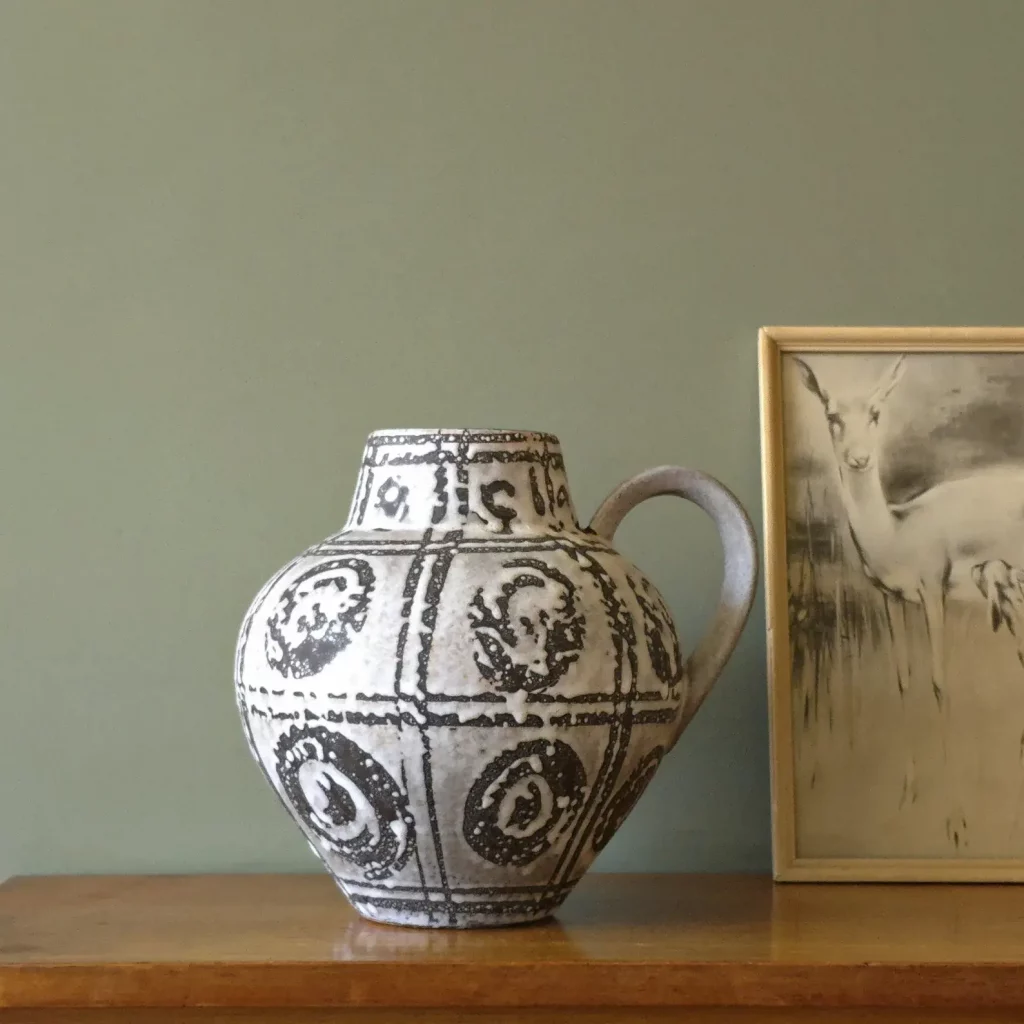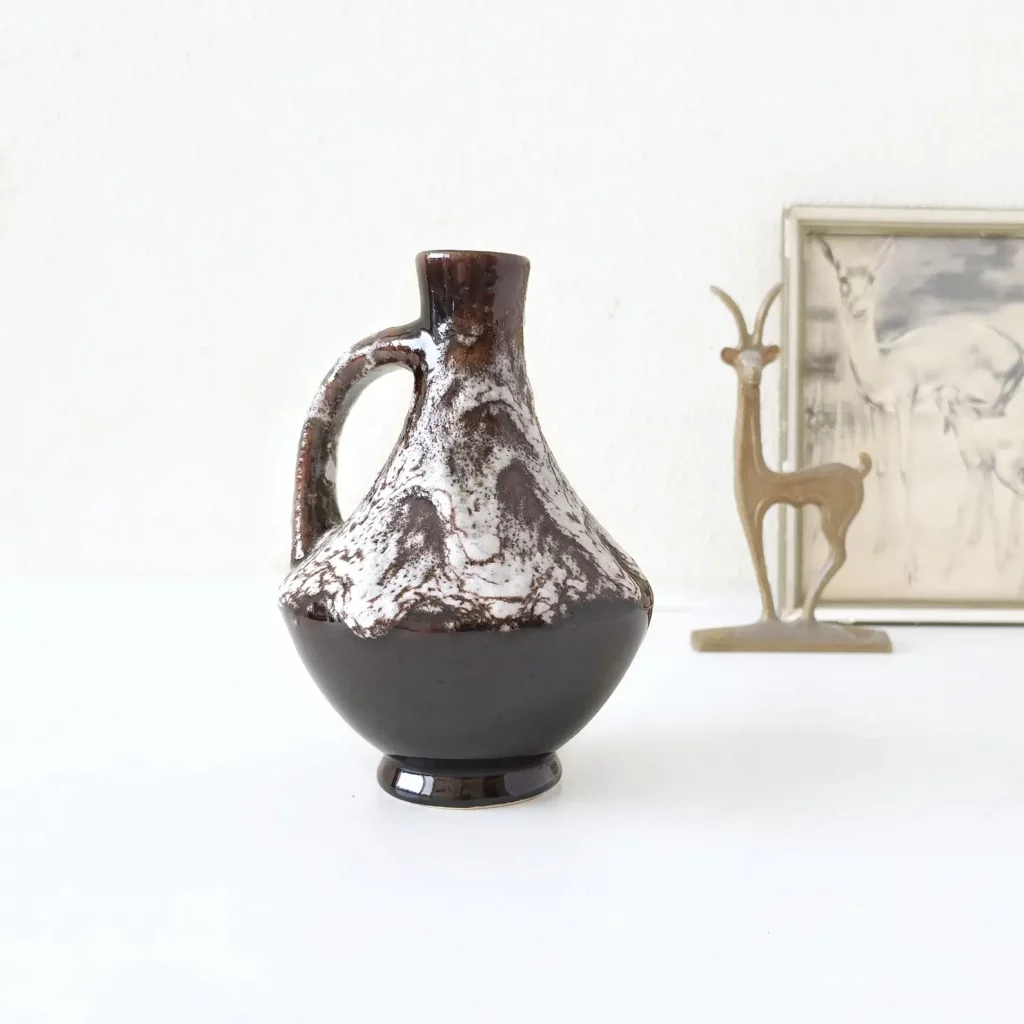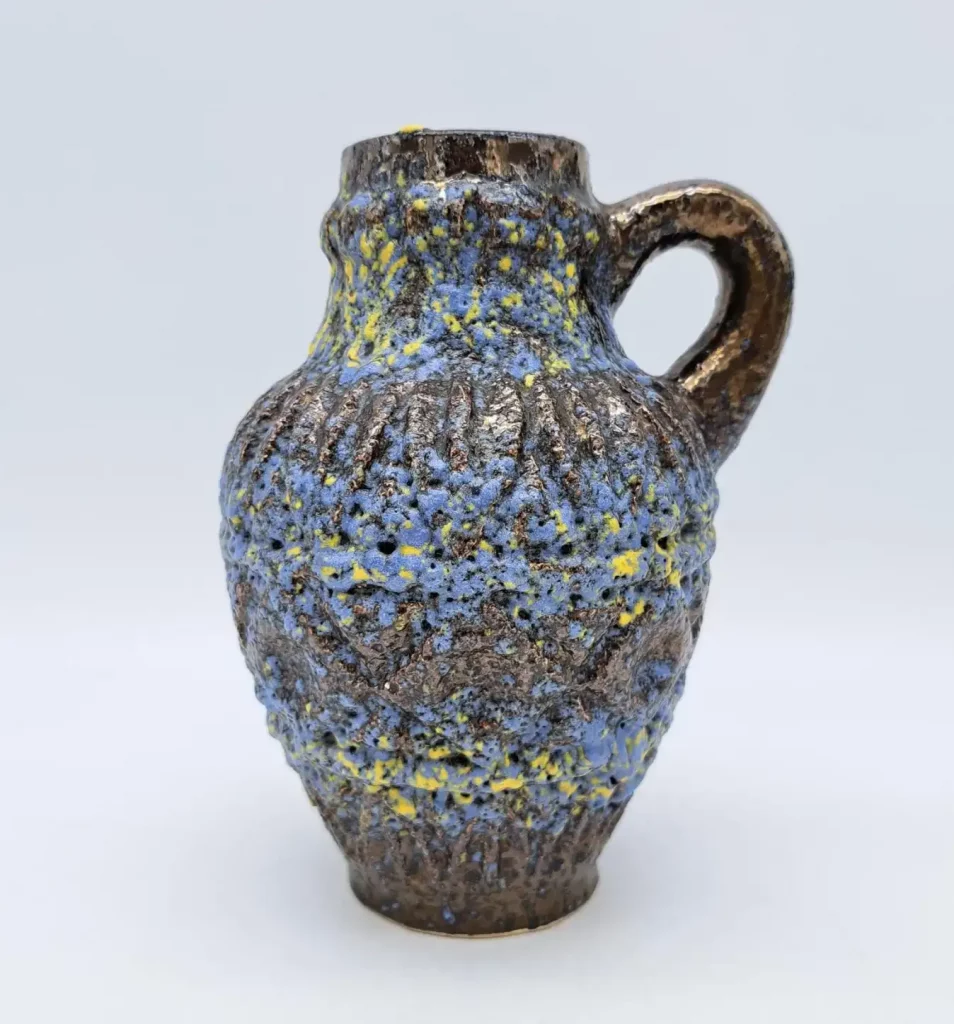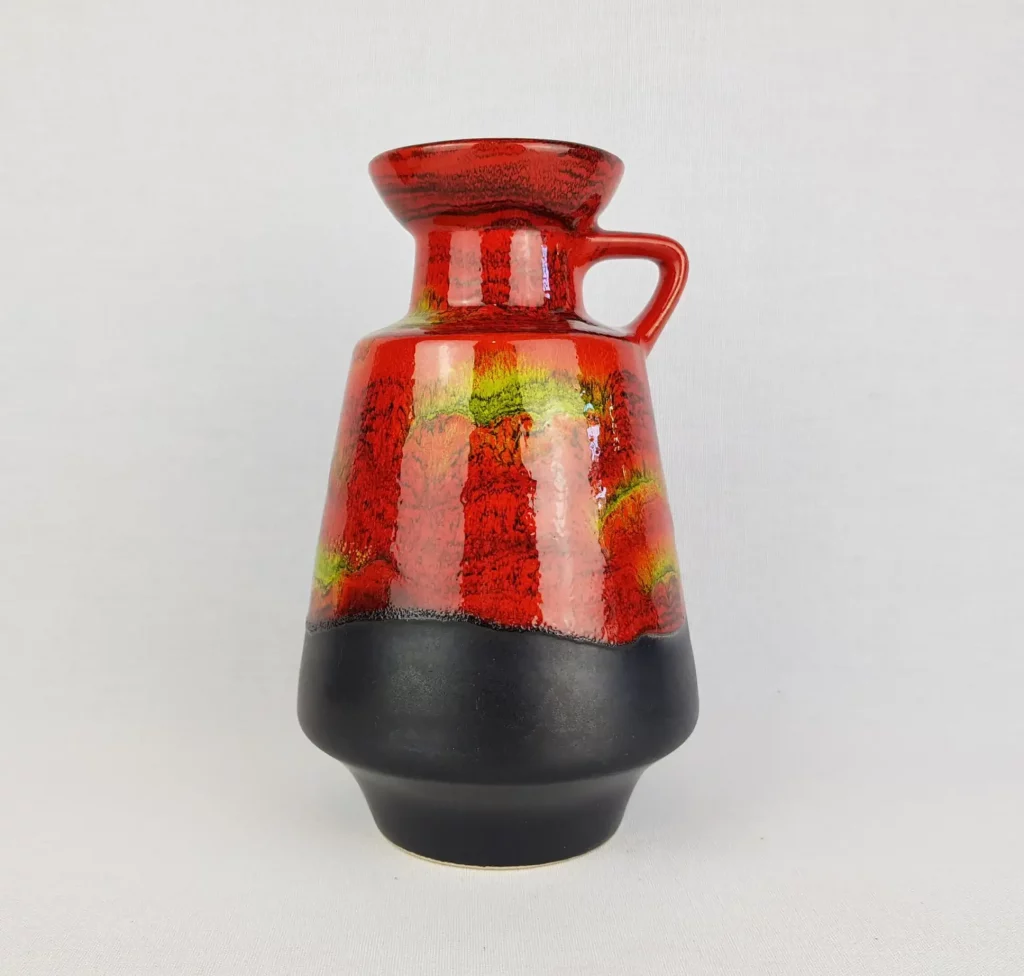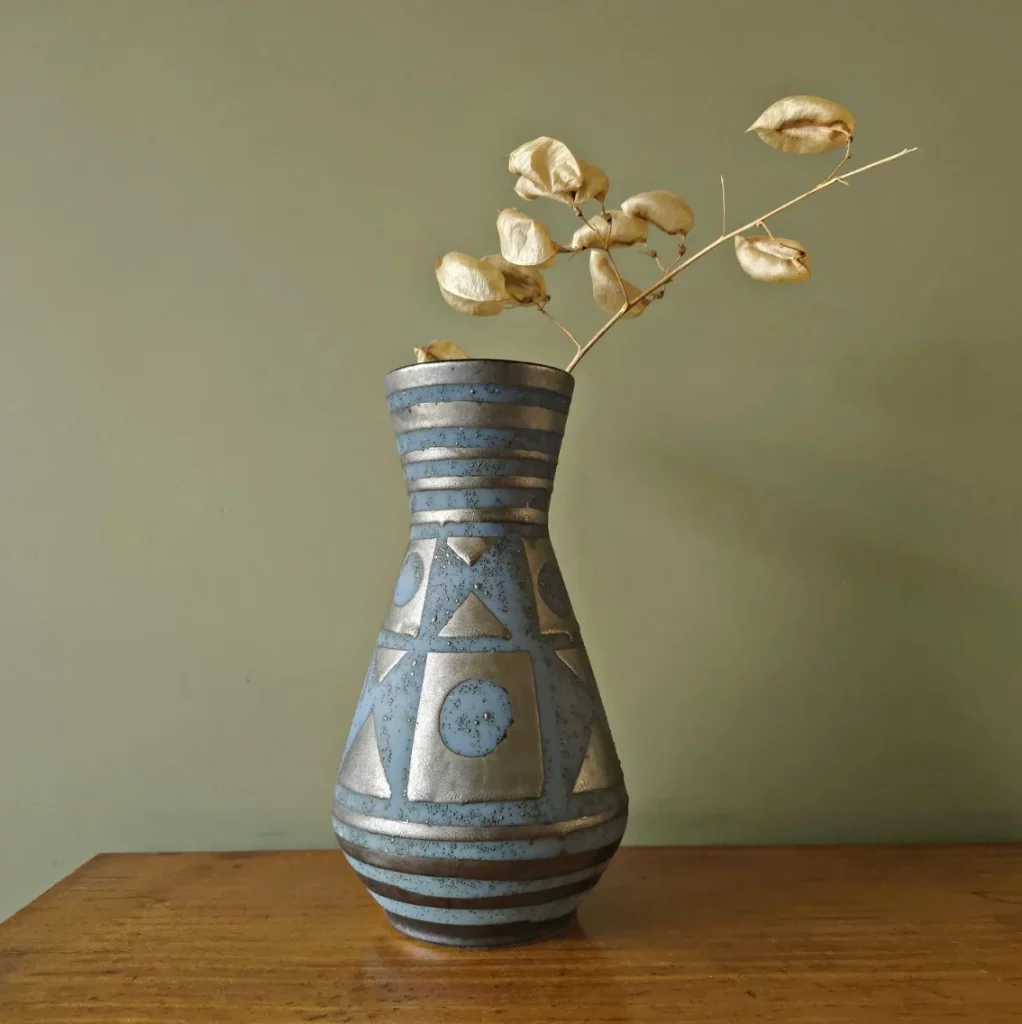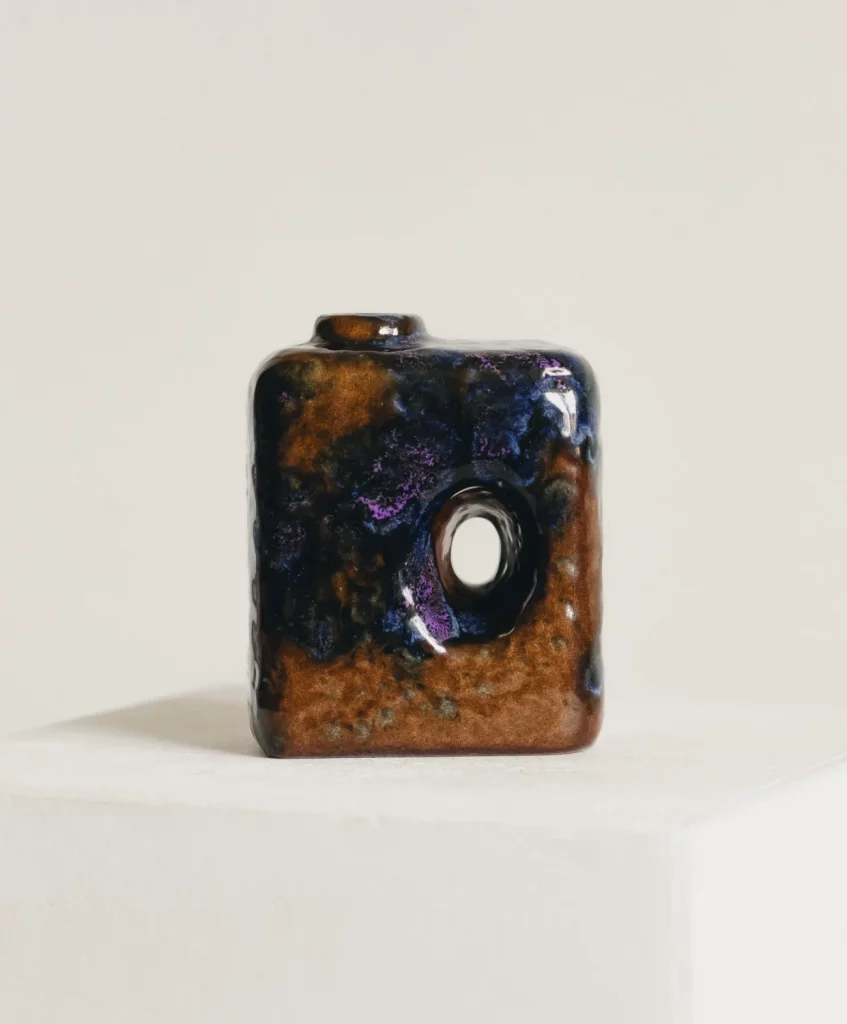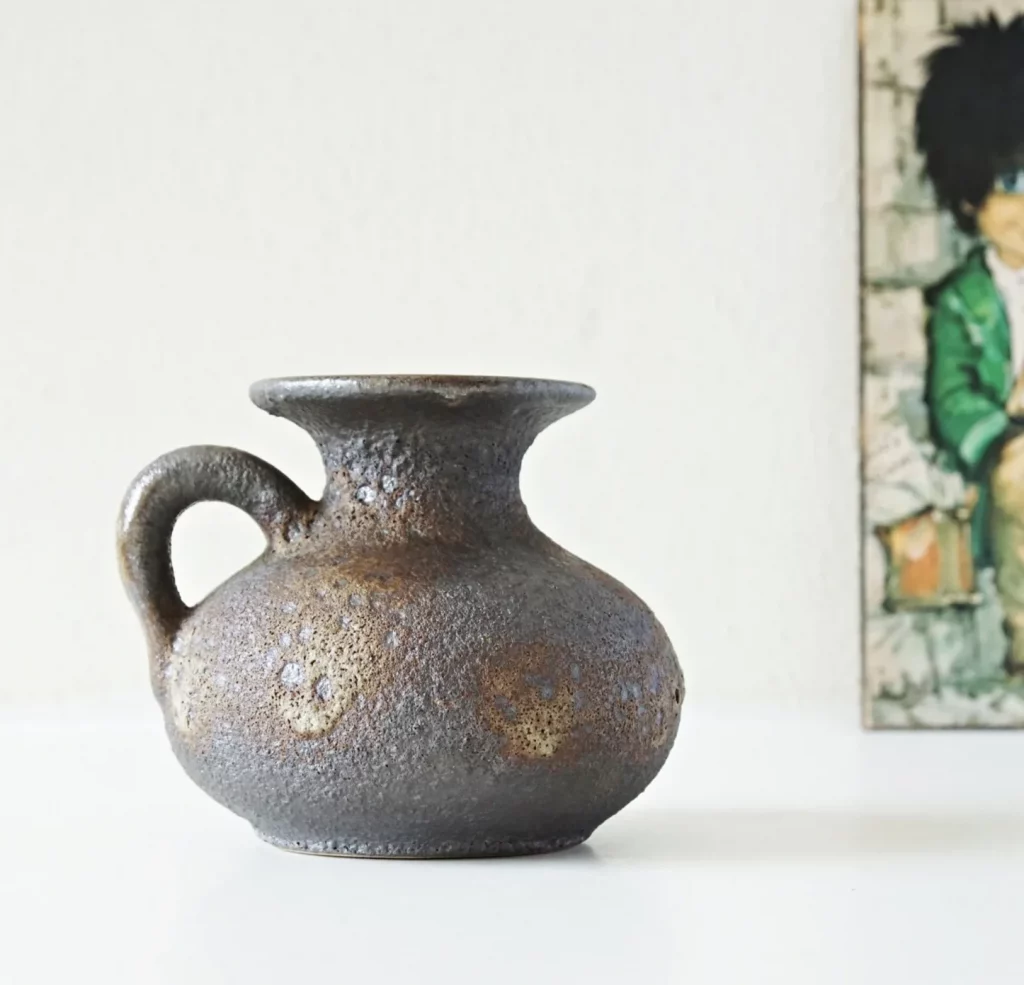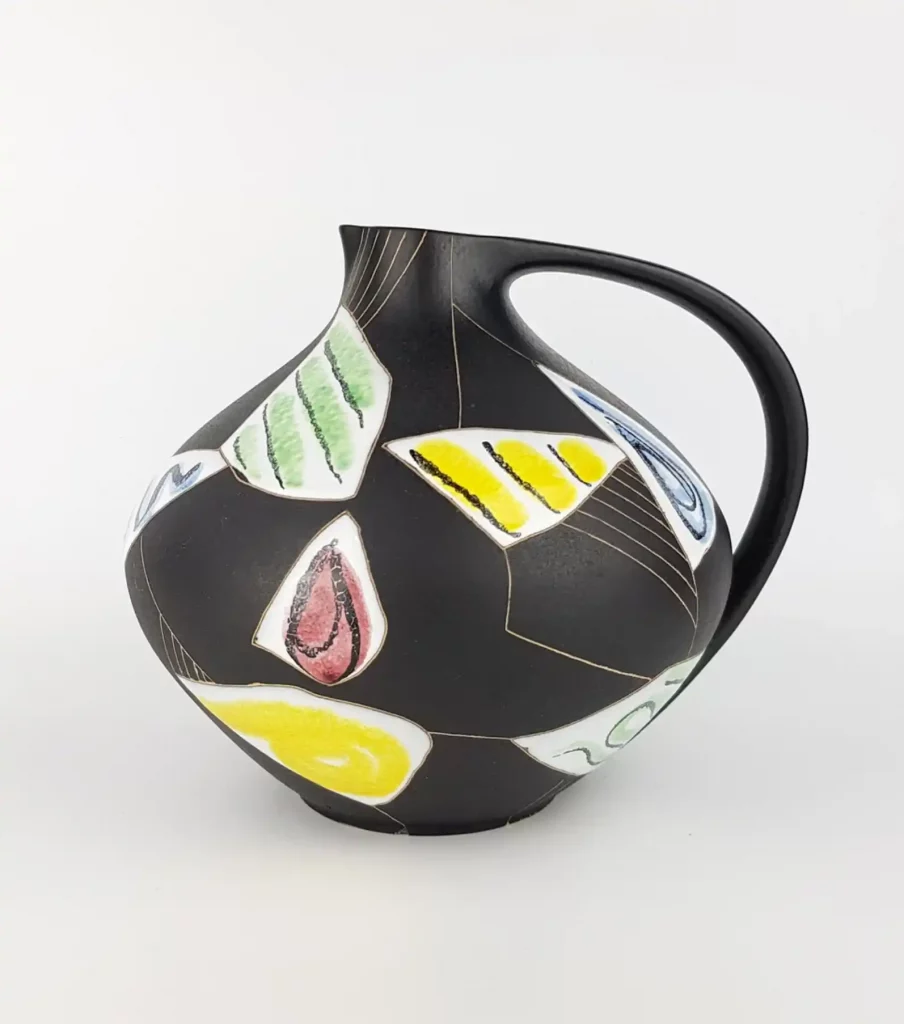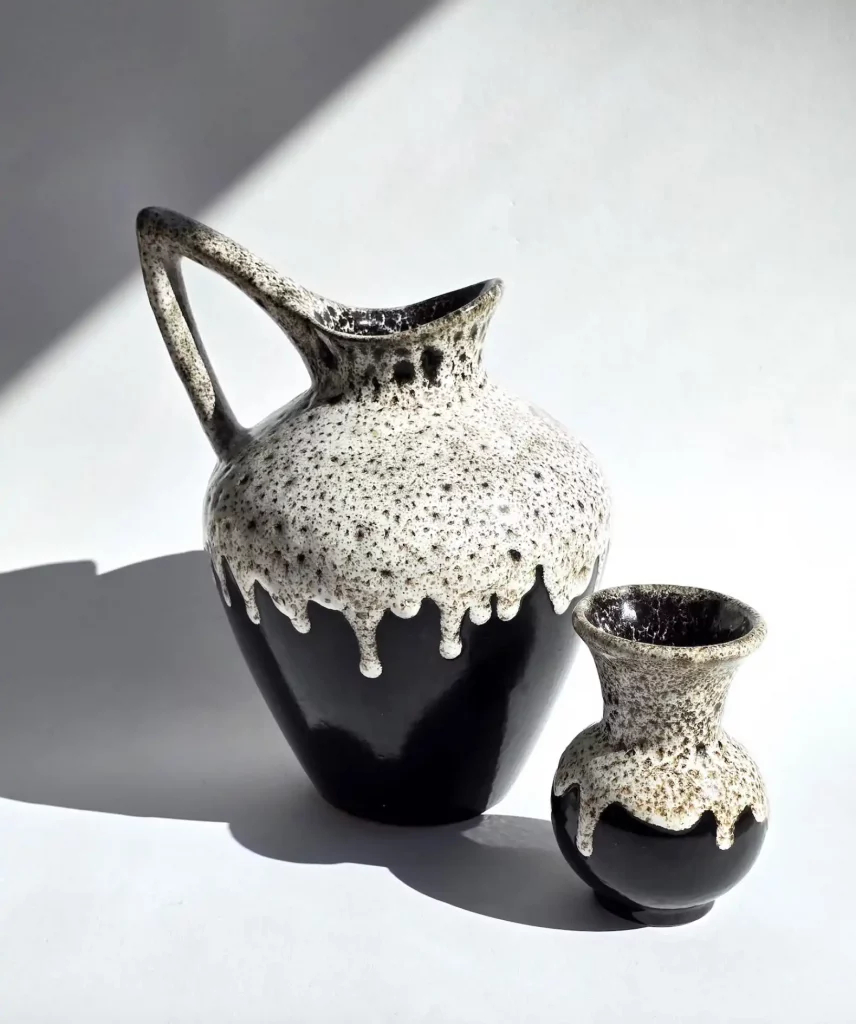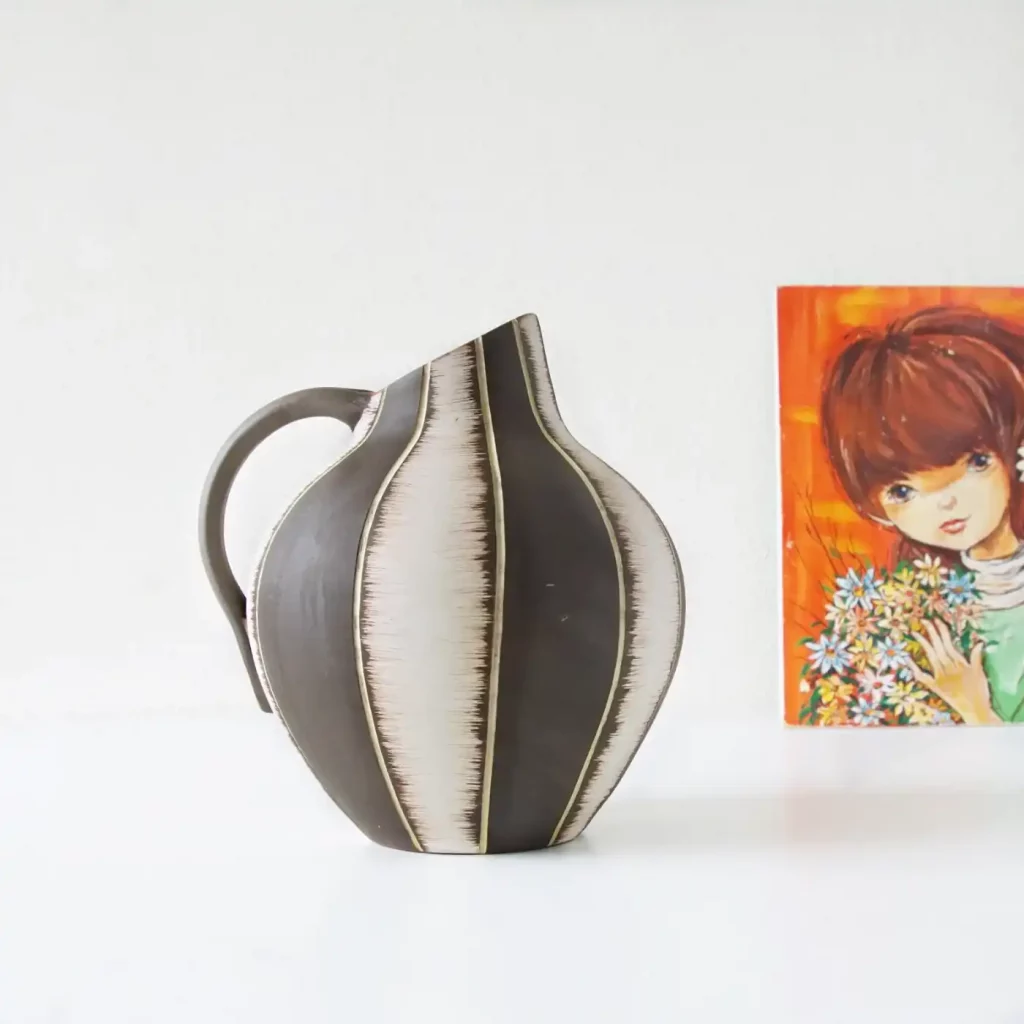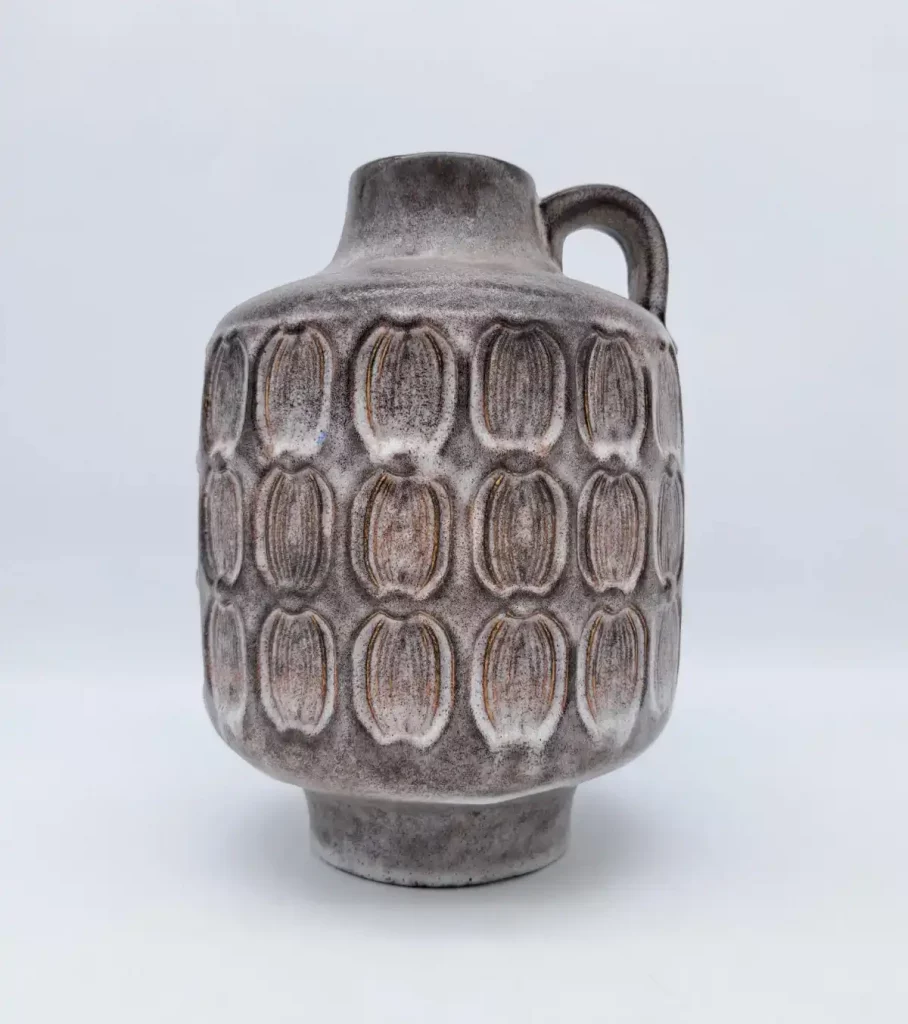Enter the world of West German pottery and you’ll see styles spanning everything from the bold and otherworldly to the quiet and minimal. You’ll meet pots and vases in expressive, sculptural shapes, tactile textures, crater-like glazes and striking colour palettes that wouldn’t look out of place in a contemporary gallery, while others evoke calm, balance and simplicity.
After World War II, factories in the new Federal Republic (West Germany 1949-1990) ramped up stoneware production to serve a booming home decor market. Many were based in the Westerwald region of Germany, which is home to a large number of clay quarries and varying clay types.
The curious label ‘Fat Lava’ is often linked to West German pottery because it describes distinctive glazes that look like thick, foamy lava. It’s an unofficial, fairly recent term (possibly coined by eBay sellers in the early 2000s) but is often used to describe the period in general.
Where to Shop for West German Pottery Online
If you love collecting and curating vintage finds, ceramics from this fascinating period of history might become your next big obsession. Due to the huge volume of pieces that were produced, there’s a wealth of West German pottery to be discovered on marketplaces such as Etsy, Vinterior, Pamono, Selency and eBay. Many can be sourced in the UK but most of the examples selected here came from Europe-based Etsy stores, particularly those with a large inventory:
With so many styles in circulation (into the thousands), this post doesn’t get close to covering them all, but will hopefully inspire you to seek out your favourites. If you’re after a piece to elevate a mid-century dining table, your favourite houseplant or a kitchen shelf, below are some of the most recognisable names in West German pottery, along with signature shapes or glazes worth searching for.
Some of the links in this post are affiliate links. This means Upcyclist may earn a small commission should you decide to make a purchase. Thanks for supporting Upcyclist.co.uk.
Brands to Know
Scheurich
Scheurich was one of the biggest West German pottery brands. Originally producing glass and porcelain in the late 1920s, they began making ceramics in 1954 and are still active today, based in Kleinheubach, Bavaria.
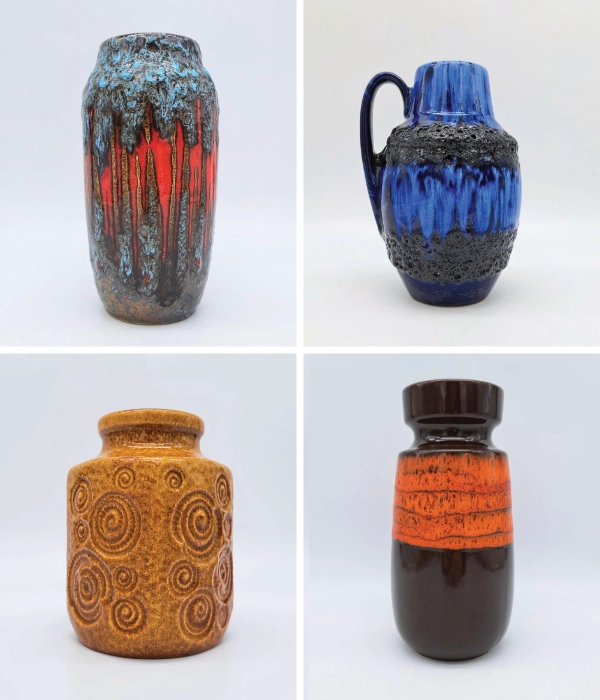
Images: Etsy/Cella7Vintage
Styles go from the matt and earthy to pieces painted with great tomato red gashes, while foamy ‘fat lava’ glazes bubble over, sometimes resembling something extra-terrestrial. These experiments with glazes are unmistakably of the era, but smooth and sleek silhouettes, glassy jewel tones, decorations in relief or incised patterns were also widespread.
Bay Keramik
If strong colours and fat lava aren’t your scene, you might consider some of the earthier palettes and minimal shapes like this one from Bay Keramik.
Dümler & Breiden
Carstens (Tönnieshof/Atelier)
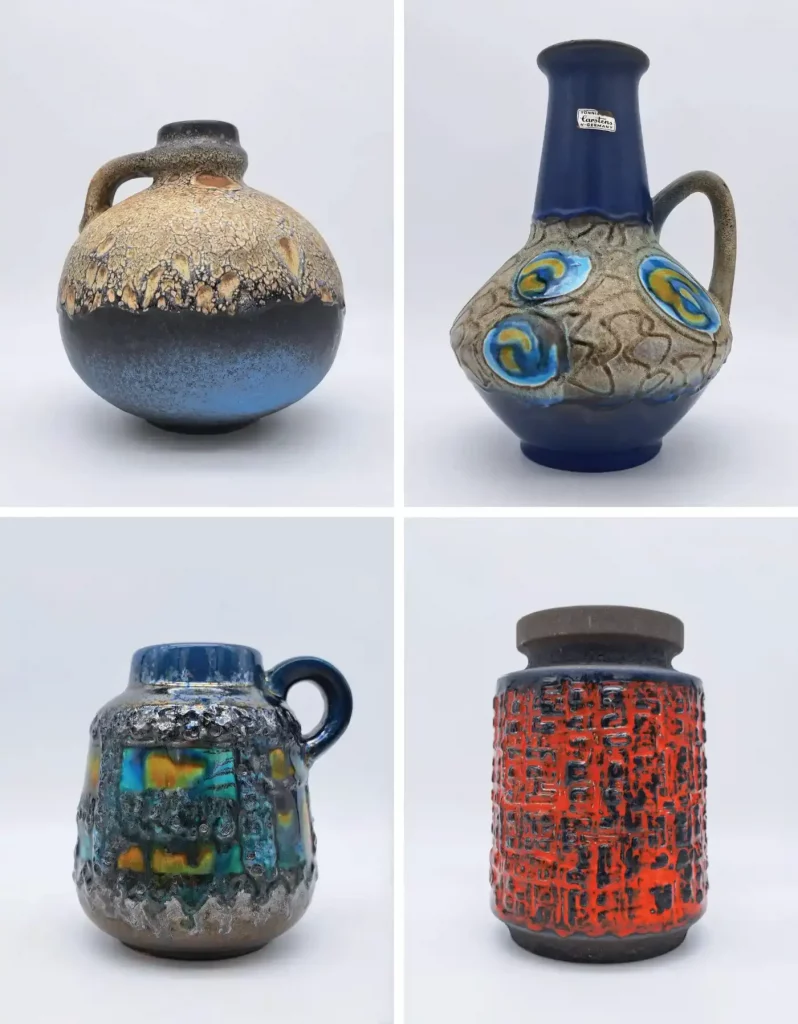
Images: Etsy/Cella7Vintage
Carstens was another prolific producer, a family company that relaunched post-war and ran both mass-market and more design-forward atelier lines.
Marei
Blocky Brutalist-leaning chimney styles are another motif in West German Pottery. The Toscana range by Marei Keramik comes in several colourful glaze combinations. The model above is marked 2002 and dates from the 1970s.
Jopeko
No, this hasn’t just been unearthed from the depths of Pompeii, it’s one of the recognisable styles from the Jopeko factory. The Paris range has a distinct foamy textured glaze that comes in brown and bronze.
Steuler
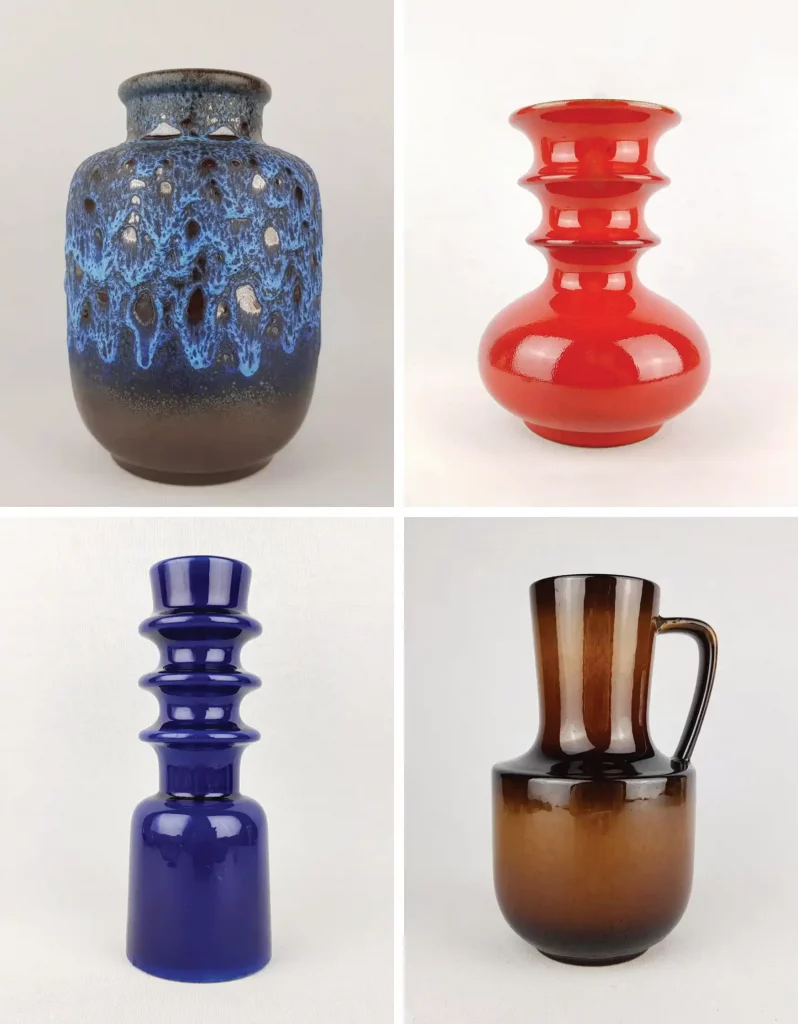
Images: Etsy/RetroVases
Steuler are recognised for their slightly more space-age designs that were designed by Cari Zalloni, and who later went on to design eyewear. Popular styles of his include ‘Cascad’, ‘Zyklon’ and ‘Facette’.
Ruscha
Although West German Pottery was factory-produced, some brands collaborated with well-known designers. Kurt Tschörner designed this iconic streamlined jug shape called the Ruscha 315 (above) in 1954 which you’ll see in a multitude of different glazes and designs.
ES Keramik (Emons und Sohne)
The ES Keramik factory was founded in 1921 but split into two in 1948, with one factory becoming the Marei brand.
Eiwa (Eisbach-Wagner)
Eiwa are known for their hand-worked ‘scraffito’ or ‘klinker’ decoration where designs are incised into the clay and usually graphic in style.
More Names to Look Out For
- JASBA
- Otto Keramik
- Ü-Keramik (Uebelacker)
- Fohr Keramik
- ILKRA
- Ceramano
West German Pottery Searching Tips
- West German pottery pieces are marked with a shape number followed by height in centimetres (e.g. 311-20), so if you like the silhouette but not the colour, try typing in the style number and you may see some alternatives in different glazes.
- Not all pieces have the foamy ‘fat lava’ texture, but many sellers still use the term as a catch-all for West German pottery, so it’s worth including it in your search. Search also for ‘WGP’ in addition to ‘west german pottery’.
- Today, some of these pieces still carry their original factory name stickers, but ones without are often attributed by collectors due to their distinct shape or glaze. There are also plenty of unlabelled pieces that will give you the look and the history for less.
- A brilliant resource for identifying pieces by their style number is Keramiksammlung by collector Ralf J. Schumann and covers makers from 1950s–70s

